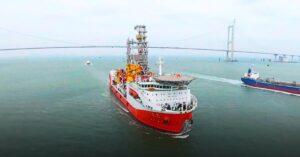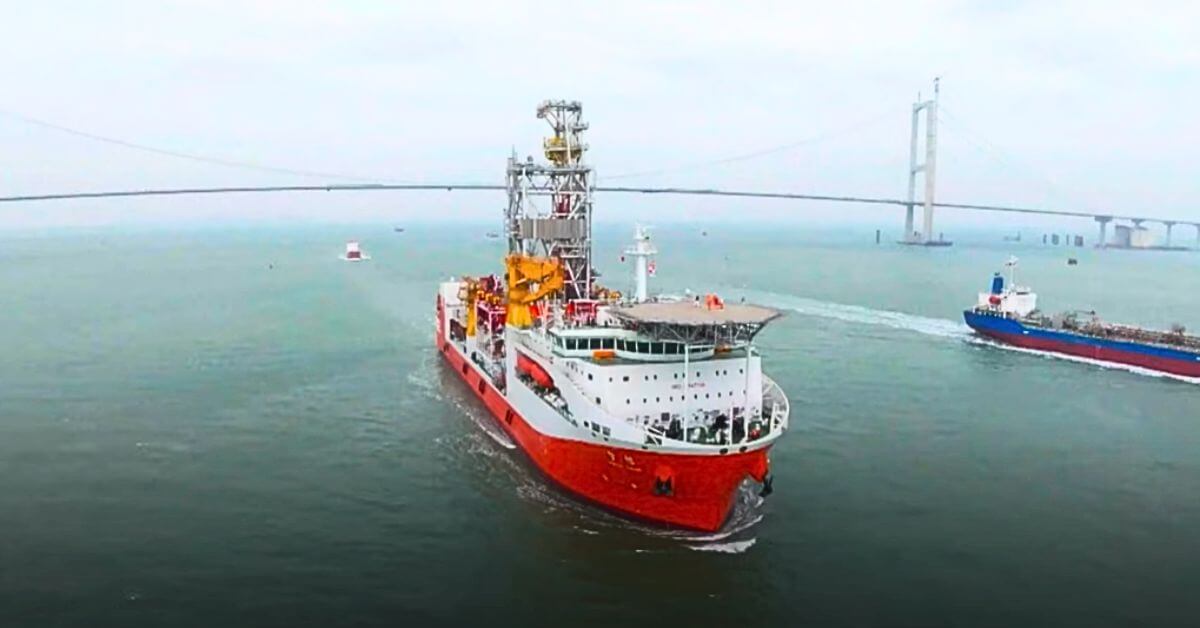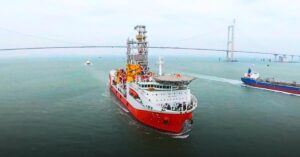
Climate Protest At World’s Largest Coal Port Forces Bulk Carrier To Turn Back, 170 Arrested
November 25, 2024
Watch: Vessel Drifts Uncontrollably & Collides With Cargo Ship Off Istanbul Coast
November 25, 2024

China’s first domestically designed deep-ocean drilling vessel, Meng Xiang, officially entered service in Guangzhou on November 24, 2024.
The vessel is capable of drilling up to 11 kilometres beneath the ocean floor, advancing global scientific research and marine resource exploration.
Meng Xiang, measuring 179.8 meters long and 32.8 meters wide, with a displacement of 42,600 tonnes, is the largest scientific research vessel built in China.
It can operate for up to 120 days continuously, covering a range of 15,000 nautical miles and accommodating 180 people.
Xu Zhenqiang, director of the Guangzhou Marine Geological Survey, discussed the vessel’s potential. He said the deep earth core samples collected by the vessel will provide evidence for scientists studying plate tectonics, ancient marine climates, and life evolution.
He added that this new capability would help humanity understand and use ocean resources better.
The vessel is equipped with nine advanced laboratories spanning over 3,000 square meters. It integrates research fields from geology and geochemistry to microbiology and drilling technology.
It also features the world’s first automated core sample storage system, which enhances marine research efficiency.
Video Credits: CGTN/YouTube
The vessel’s hydraulic lifting rig, with a lifting capacity of 907 tonnes, supports diverse operations, including deep-ocean coring and gas hydrate exploration. Zhang Haibin, chief designer, said that after two rounds of sea trials, the vessel’s performance exceeded the design expectations.
China’s President Xi Jinping sent a congratulatory letter at the commissioning ceremony, praising the vessel. Xi acknowledged the challenges the design and construction teams had overcome and encouraged them.
The vessel’s first mission is scheduled for the end of 2024, which will focus on reaching the boundary between the Earth’s crust and mantle, known as the Moho discontinuity.
Lin Boqiang, director of the China Center for Energy Economics Research, said advanced technology reduces exploration costs, enabling deeper exploration than ever before.
With the commissioning ceremony of Meng Xiang, China has now joined global leaders like the US, Japan, and Europe in independently conducting deep-sea expeditions.
Tuo Shouting, the director of the IODP-China Office, expressed hope that the vessel would contribute greatly to international research.
The vessel is built to withstand super typhoons and can operate in any sea. Its unique combination of deep-ocean drilling, oil and gas exploration, and natural gas hydrate trials sets a new standard for deep-sea vessels globally.
References: CGTN, English.Gov.CN
Source: Maritime Shipping News


